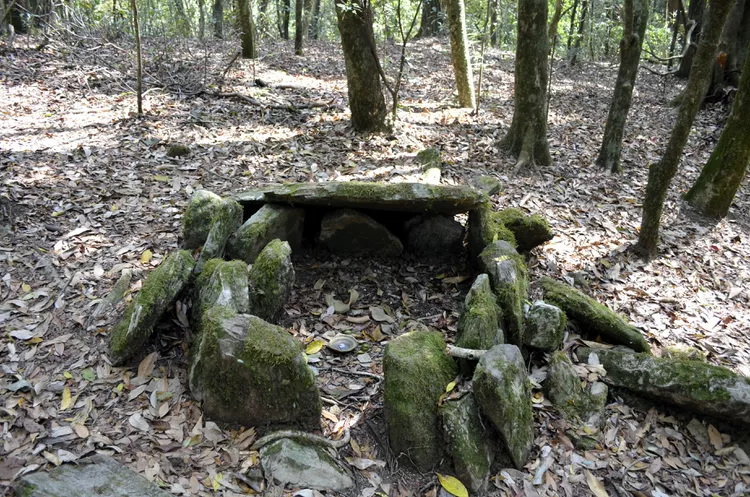Summary
Mawphlang Sacred Forest Overview
Perched on the East Khasi Hills near Mawphlang village and surrounded by fields, Mawphlang Sacred Forest is one of the must-see places in Meghalaya in remote northeast India. There are many sacred forests in these hills and the state’s Jaintia Hills. Nevertheless, this particular forest stands out as the most well-known. While it may seem unremarkable and somewhat disappointing to the uninitiated, a local Khasi guide will reveal its deeper mysteries.
Upon entering the forest, visitors are greeted by an astonishing network of plants and trees, all interconnected. Some of these trees, believed to be over 1,000 years old, carry ancient wisdom. The area is filled with medicinal plants, some of which are thought to have the ability to cure serious ailments like cancer and tuberculosis. Additionally, Rudraksh trees—whose seeds are utilized in religious ceremonies—abound, along with orchids, carnivorous pitcher plants, ferns, and mushrooms.
Although the forest boasts impressive biodiversity, this alone does not account for its sacred status. According to local tribal beliefs, a deity known as labasa resides within the forest, taking the form of a tiger or leopard that protects the local community. During times of need, such as illness, animal sacrifices (including goats and roosters) are performed at stone temples within the forest. Members of the Khasi tribe also honor their dead by burning their bones inside the forest.
Removing anything from the forest is strictly prohibited, as it may disturb the deity, leading to serious consequences for those who violate this taboo.
Khasi Heritage Village
A Khasi Heritage Village has been established by the Khasi Hills Autonomous District Council opposite Mawphlang Sacred Forest. This village features authentic, traditionally constructed mock tribal huts, offering local food and toilets. The culture and heritage of the Khasi tribe are showcased during the two-day Monolith Festival, which occurs in March. Unfortunately, the festival has been sporadic in recent years due to lack of funding, affecting the village’s maintenance as well.
How to Get There
Mawphlang is located 25 kilometers from Shillong, making it a convenient trip of about one hour by car. Taxi fares from Shillong typically cost around 1,500 rupees for a round trip. Mr. Mumtiaz is a recommended driver, reachable at phone number 9206128935.
When to Go
The sacred forest is open for visitors daily from 9 a.m. to 4:30 p.m.
Entry Fees and Charges
The entrance fee for the sacred forest and Khasi Heritage Village is 10 rupees per person, an additional 10 rupees for a camera, and 50 rupees for vehicle access. This fee provides employment for local youths as caretakers. English-speaking Khasi guides charge 300 rupees for a half-hour walk and 500 rupees for an hour, which is compulsory to hire. Visitors can opt to pay extra for a deeper exploration of the forest.
Where to Stay
If you wish to stay in the area and explore, Maple Pine Farm bed and breakfast is highly recommended. This establishment features four cozy eco-friendly cottages and operates off-the-grid. They also organize a variety of excursions throughout the region and beyond in northeast India.
Other Attractions
The scenic route to Mawphlang from Shillong also leads you to two other notable attractions: Shillong Peak and Elephant Falls. These sites can be easily included in your itinerary. Additionally, the David-Scott Trail, recognized as one of Meghalaya’s most popular trekking routes, is situated behind the forest, offering a four to five hour trek.





